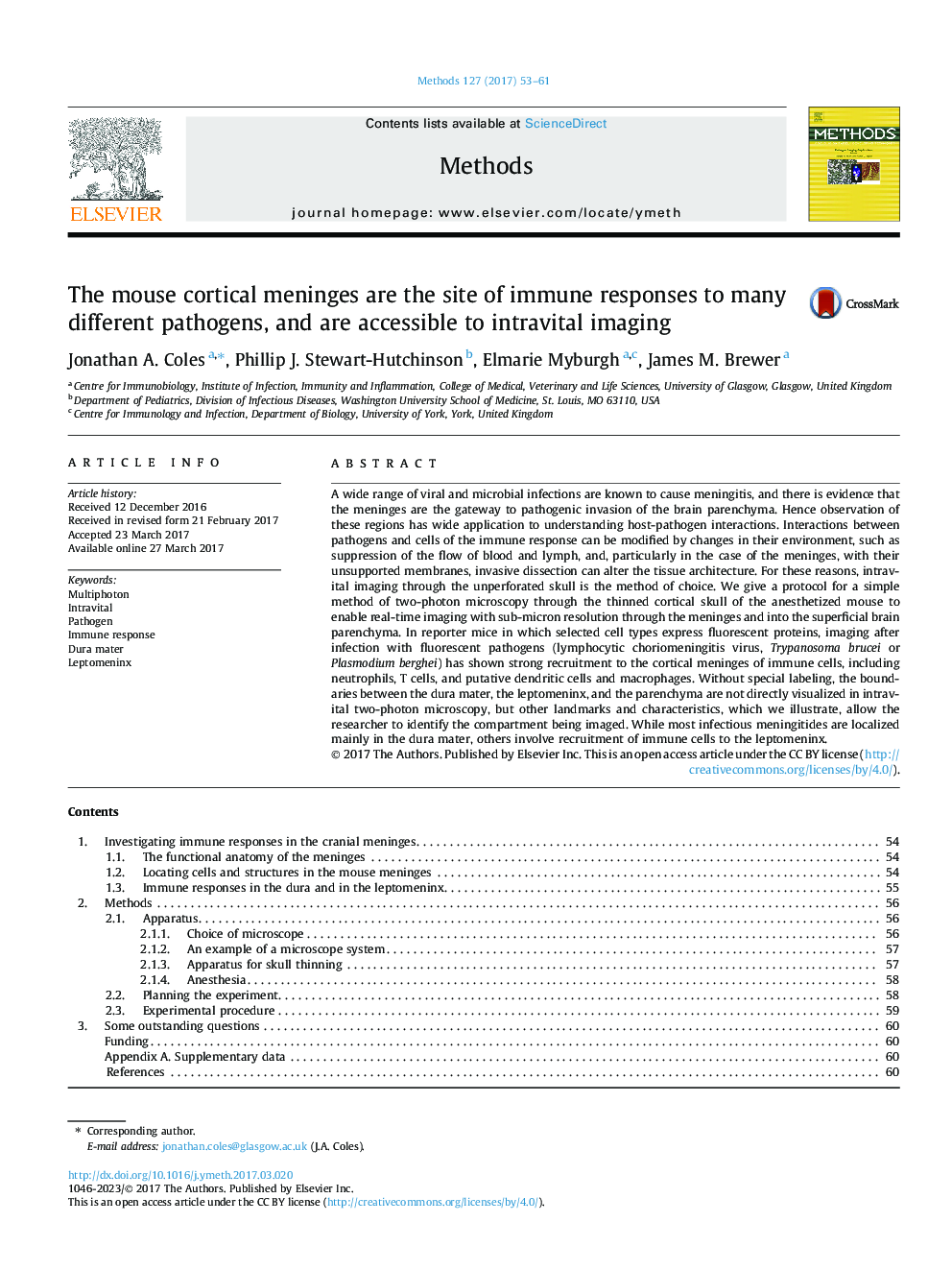| کد مقاله | کد نشریه | سال انتشار | مقاله انگلیسی | نسخه تمام متن |
|---|---|---|---|---|
| 5513373 | 1541201 | 2017 | 9 صفحه PDF | دانلود رایگان |
- Many pathogens cause inflammation of the brain meninges.
- Two-photon microscopy can video cell movements in the meninges of reporter mice.
- Immune cells are recruited mainly to either the dura mater or the leptomeninx.
- Guidance to distinguishing dura, leptomeninx, and parenchyma in vivo is given.
A wide range of viral and microbial infections are known to cause meningitis, and there is evidence that the meninges are the gateway to pathogenic invasion of the brain parenchyma. Hence observation of these regions has wide application to understanding host-pathogen interactions. Interactions between pathogens and cells of the immune response can be modified by changes in their environment, such as suppression of the flow of blood and lymph, and, particularly in the case of the meninges, with their unsupported membranes, invasive dissection can alter the tissue architecture. For these reasons, intravital imaging through the unperforated skull is the method of choice. We give a protocol for a simple method of two-photon microscopy through the thinned cortical skull of the anesthetized mouse to enable real-time imaging with sub-micron resolution through the meninges and into the superficial brain parenchyma. In reporter mice in which selected cell types express fluorescent proteins, imaging after infection with fluorescent pathogens (lymphocytic choriomeningitis virus, Trypanosoma brucei or Plasmodium berghei) has shown strong recruitment to the cortical meninges of immune cells, including neutrophils, T cells, and putative dendritic cells and macrophages. Without special labeling, the boundaries between the dura mater, the leptomeninx, and the parenchyma are not directly visualized in intravital two-photon microscopy, but other landmarks and characteristics, which we illustrate, allow the researcher to identify the compartment being imaged. While most infectious meningitides are localized mainly in the dura mater, others involve recruitment of immune cells to the leptomeninx.
The objective of a two-photon microscope is shown above the thinned parietal skull of a mouse. Infection with Plasmodium berghei (left hand side, blue spheres) causes recruitment of T cells (orange with grey nuclei) to subarachnoid spaces in the leptomeninx. Infection with Trypanosoma brucei (right hand side, blue) causes recruitment of T cells to the dura where they can move among the collagen fibers (green lines). A near-infrared laser beam (large arrow) excites fluorophores by two-photon absorption and they emit fluorescence at characteristic visible wavelengths (colored arrows).192
Journal: Methods - Volume 127, 15 August 2017, Pages 53-61
